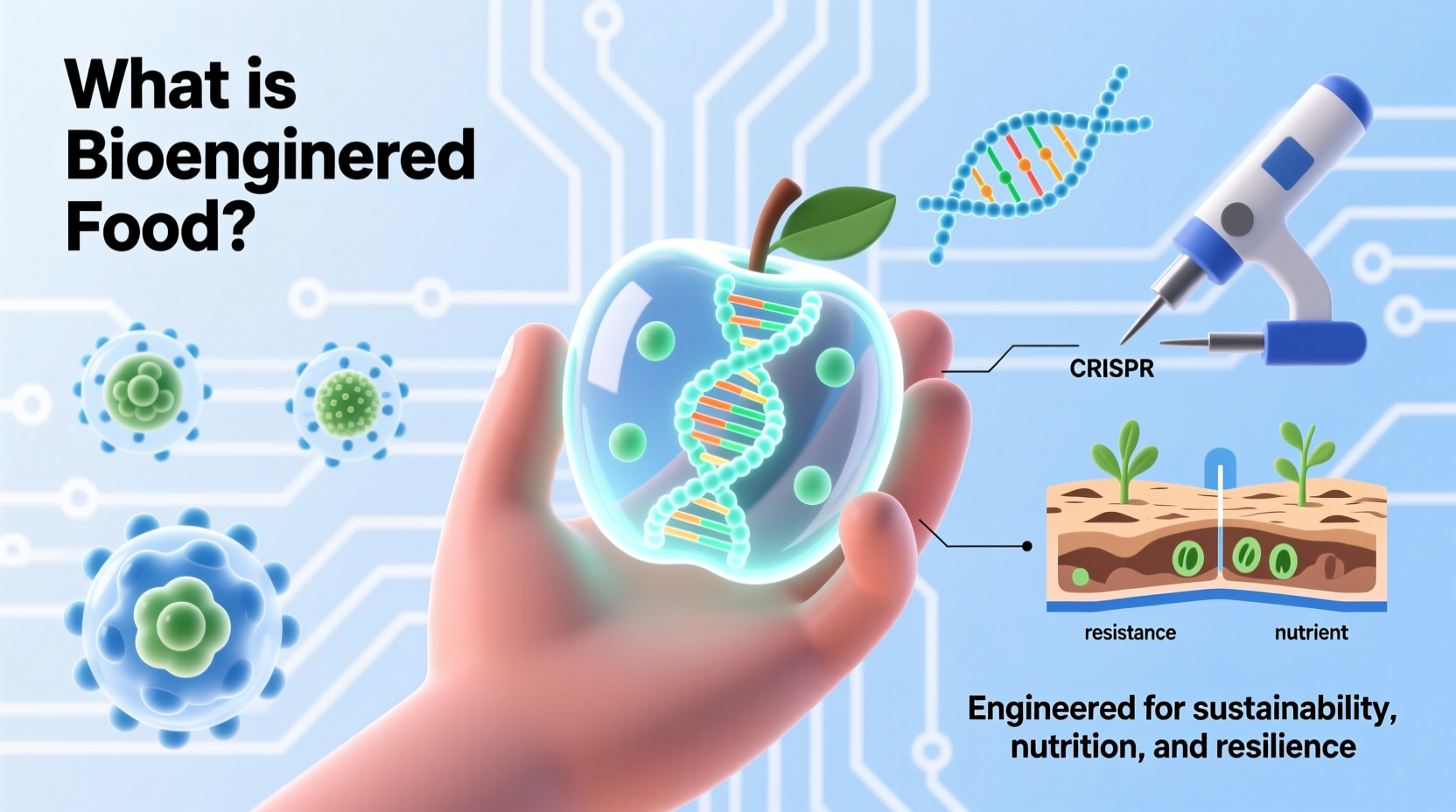Understanding what bioengineered food means is essential for informed grocery shopping in today's marketplace. If you've spotted the "bioengineered" label on food packages and wondered how this differs from GMOs or organic products, you're not alone. This comprehensive guide explains the precise definition, regulatory requirements, and real-world implications of bioengineered foods—so you can make confident choices at the supermarket.
What Exactly Qualifies as Bioengineered Food?
The USDA's National Bioengineered Food Disclosure Standard provides the official definition that matters for labeling purposes. According to this regulation, a food is considered bioengineered if it contains genetic material that has been modified through recombinant DNA techniques and the modification could not otherwise be obtained through conventional breeding or found in nature.
Unlike the broader term "GMO" (Genetically Modified Organism), which encompasses various modification techniques including traditional crossbreeding, "bioengineered" specifically refers to laboratory-based genetic alterations. This precise definition was established to create consistent labeling standards that consumers can rely on.

Key Differences: Bioengineered vs. GMO vs. Organic
| Category | Definition | Labeling Requirements | Common Examples |
|---|---|---|---|
| Bioengineered | Foods with detectable modified genetic material from lab techniques | Required labeling since 2022 per USDA standard | Non-browning apples, disease-resistant papaya, high-oleic soybeans |
| GMO | Broad term including both lab-modified and conventionally bred organisms | No specific federal labeling requirement | Most corn, soy, and sugar beets in processed foods |
| Organic | Produced without bioengineering techniques or synthetic inputs | Certified organic products cannot contain bioengineered ingredients | Organic corn chips, organic soy milk |
How the Bioengineered Food Labeling System Evolved
Understanding the timeline of bioengineered food regulation helps clarify why these labels now appear on certain products:
- 2016: The National Bioengineered Food Disclosure Standard became law, requiring standardized labeling
- 2018: USDA finalized the specific definition and labeling requirements
- 2020: Compliance deadline set for January 1, 2022
- 2022: Mandatory labeling began for applicable products
- 2023: USDA implemented enforcement of the standard
This regulatory evolution responded to consumer demand for transparency. According to USDA data, approximately 70% of processed foods previously contained GMO ingredients without clear labeling. The bioengineered food standard creates a more precise disclosure system that focuses specifically on laboratory-modified genetic material.
Common Bioengineered Food Examples You Might Encounter
While many staple crops have GMO varieties, only specific products currently qualify as "bioengineered" under the USDA standard:
- Non-browning Arctic® apples - Genetically modified to resist browning when sliced
- PRSV-resistant papaya - Saved Hawaii's papaya industry from viral devastation
- Innate™ potatoes - Engineered to reduce bruising and lower acrylamide formation
- High-oleic soybeans - Modified for healthier oil profile with less saturated fat
- Sweet corn - Certain varieties engineered for insect resistance
It's important to note that most commodity crops like conventional corn, soybeans, and canola used in processed foods contain GMO varieties but don't necessarily qualify as "bioengineered" under the current labeling standard because they may not contain detectable modified genetic material in the final product.
Benefits and Considerations of Bioengineered Foods
Bioengineered foods offer several potential advantages while raising legitimate considerations:
Documented benefits include:
- Enhanced nutritional profiles (like Golden Rice with added vitamin A)
- Reduced food waste through improved shelf life
- Decreased pesticide use through built-in pest resistance
- Improved farming efficiency and yield stability
Important considerations:
- Long-term environmental impacts require ongoing monitoring
- Intellectual property issues affecting seed access for farmers
- Need for continued independent safety research
- Consumer right to transparent labeling and choice
The National Academy of Sciences reviewed over 900 studies and concluded that genetically engineered crops are safe to eat, with no evidence of harm different from conventional breeding methods. However, they emphasized the importance of case-by-case evaluation rather than blanket judgments about the technology.
What the Future Holds for Bioengineered Foods
Emerging technologies are expanding the possibilities for bioengineered foods while regulations continue to evolve:
- Gene editing advancements like CRISPR may create new categories of modified foods that challenge current definitions
- Climate-resilient crops engineered for drought tolerance could address food security challenges
- Nutritional enhancements targeting specific health conditions are in development
- Regulatory updates may refine the definition as technology evolves
As these developments continue, staying informed about the precise meaning of "bioengineered" will help consumers navigate an increasingly complex food landscape. The USDA continues to maintain an updated list of bioengineered foods subject to labeling requirements, which currently includes 11 ingredients.
Practical Tips for Navigating Bioengineered Food Labels
When shopping, keep these practical considerations in mind:
- Look for the official "Bioengineered" or "Derived from Bioengineering" disclosure on packaging
- Understand that "Non-GMO Project Verified" doesn't necessarily mean the same as "non-bioengineered"
- Remember that organic certification guarantees no bioengineered ingredients
- Check the USDA's online resources for the most current list of bioengineered ingredients
- Be aware that small food manufacturers may qualify for simplified disclosure options
By understanding what bioengineered food actually means—not just the label but the science and regulations behind it—you gain the knowledge to make informed decisions that align with your personal values and dietary preferences.











 浙公网安备
33010002000092号
浙公网安备
33010002000092号 浙B2-20120091-4
浙B2-20120091-4